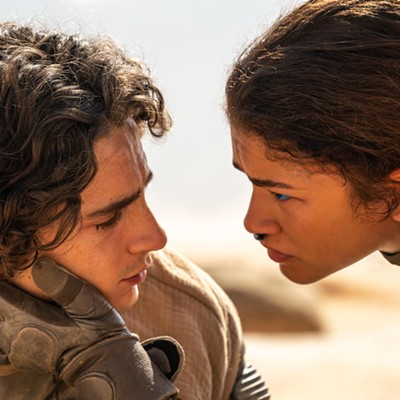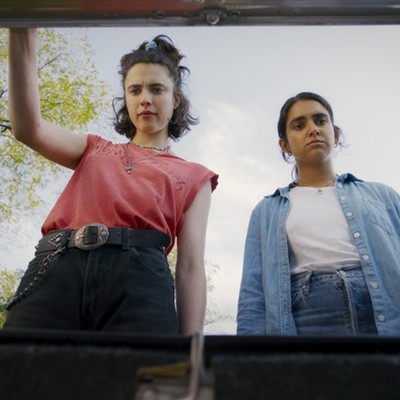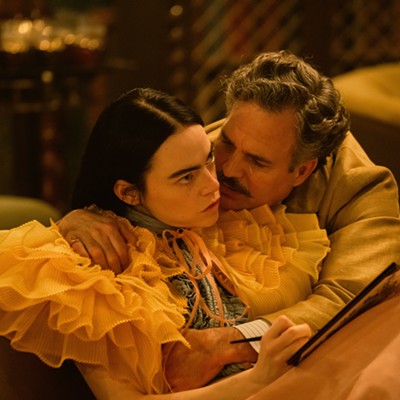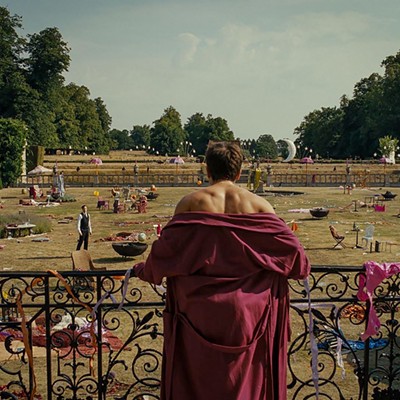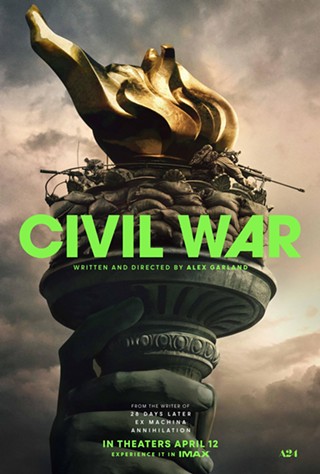That film was interesting in how little it owed to standard movie formulas; instead of the mentally ill title character being a source of wisdom that freed the button-down mind from conformity and led it into the beautiful woods of childlike love, she was just difficult and annoying, and yet not culpable or inherently evil. Obviously, Sweetie didn't play well in the heartland.
With her new film, In The Cut, Campion again intentionally eschews mainstream success by making a slow film about morally ambiguous people, and then asks for a little mainstream success by casting Meg Ryan's bizarrely collagened lips in the title role.
In The Cut borrows heavily from the film noir of the '40s in some ways that film fans will find compelling. The story concerns a high school English teacher (and thus the stereotype for primness) who might be an important witness in a murder investigation. She's visited by a gruff, and yet, surprisingly lovable detective named Malloy who has the one thing that all police officers must have: a really bad mustache.
Malloy finds the school teacher to be rather compelling in the way that American males find people who look exactly like Meg Ryan to be compelling, i.e. in regards to her bootie. So, he asks her out for a drink.
This leads, ultimately, to some incredibly awful dialogue that I think may be the film's best feature. I'm pretty sure the dialogue is awful on purpose. I could be wrong, but when a writer has a 21st-century police officer say, "That's how you flirt with the colored ladies É you stare at 'em," I can only imagine that she's up to something.
What I think Campion (who also wrote the film) was doing with this was creating a character who referenced the detective films of the middle of the last century. Mark Ruffalo, as Malloy, plays the part as though stuck in a time loop oscillating between 1945 and 2003. Half the time, he's a gruff hero who exists in a world where casual racism and sexism aren't even noticed; the other half, he's a divorced father who gives long orations on the proper technique for orally pleasuring a woman.
It could also be that Campion is just fumbling through the dialogue and has accidentally created this weird amalgam of old and new, but it's more fun to think that she did it on purpose. Plus, most of the film seems tremendously purposive.
This is most strongly felt in the cinematography. While not going for the shaky, hand-held look of a lot of low-budget films, Campion's camera nonetheless is in constant, albeit incredibly slow, motion. It drifts across every scene, highlighting the uncertainty of Meg Ryan's conflicted character. As Ryan tries to decide if she's a prim schoolteacher or a fun-loving slut who sleeps with her students, dim lights and a floating point of view emphasize her shaky sense of self.
Ultimately, though, two of Campion's aesthetic decisions will be big turnoffs on Main Street, U.S.A. First, this film is tremendously slow. While all the elements of a fast-paced mystery/thriller are there, they're spun out at a snail's pace in order to play up the characters' inability to define themselves or their relations to others. This worked for me, because the film, like Meg Ryan herself, seemed to thrive on being pretty and empty, but it will probably bore the hell out of most of the people who buy action drinks.
The other problem is one that will attract about a third as many people as it will repel, which is the graphic nature of the film. While most of the movie is just languidly moody, there are some explicit scenes of sex and violence (though, in sharp contradistinction to Arnold Schwarzenegger's life story, the sex and violence do not occur at the same time). Advance publicity on this film made it quite clear that Meg Ryan would be showing more flesh than a kosher butcher, and I'm guessing the reason that such salacious pronouncements were made was to bring in an audience of art lovers. So if you were wondering, yes, it's true: You do get to see Meg Ryan's arm pits.
Sadly, the sex isn't totally gratuitous. In fact, it's a major point of character explication. Of course, the script is written so as to make sex a major point of character explication, which may be gratuitous on a whole other level, but still, it makes sense within the logic of the film. Plus, it leads to more embarrassingly awful dialogue wherein Meg Ryan expresses extreme surprise that a man knows how to give head, and Mark Ruffalo gives a ridiculous explication of the process whereby he learned this forbidden and largely unknown practice.
That bit of almost Mony Pythonesque silliness aside, most of the film stands up pretty well. Jennifer Jason Leigh does her usual damaged woman act, and Kevin Bacon is charming as Meg Ryan's stalkerish ex-boyfriend. While riddled with flaws, In The Cut is so often so odd that it works, at least insofar as it has a decent story and isn't just one of the cookie-cutter middlebrow movies that line up in November to beg passers-by for cash and Oscars.

